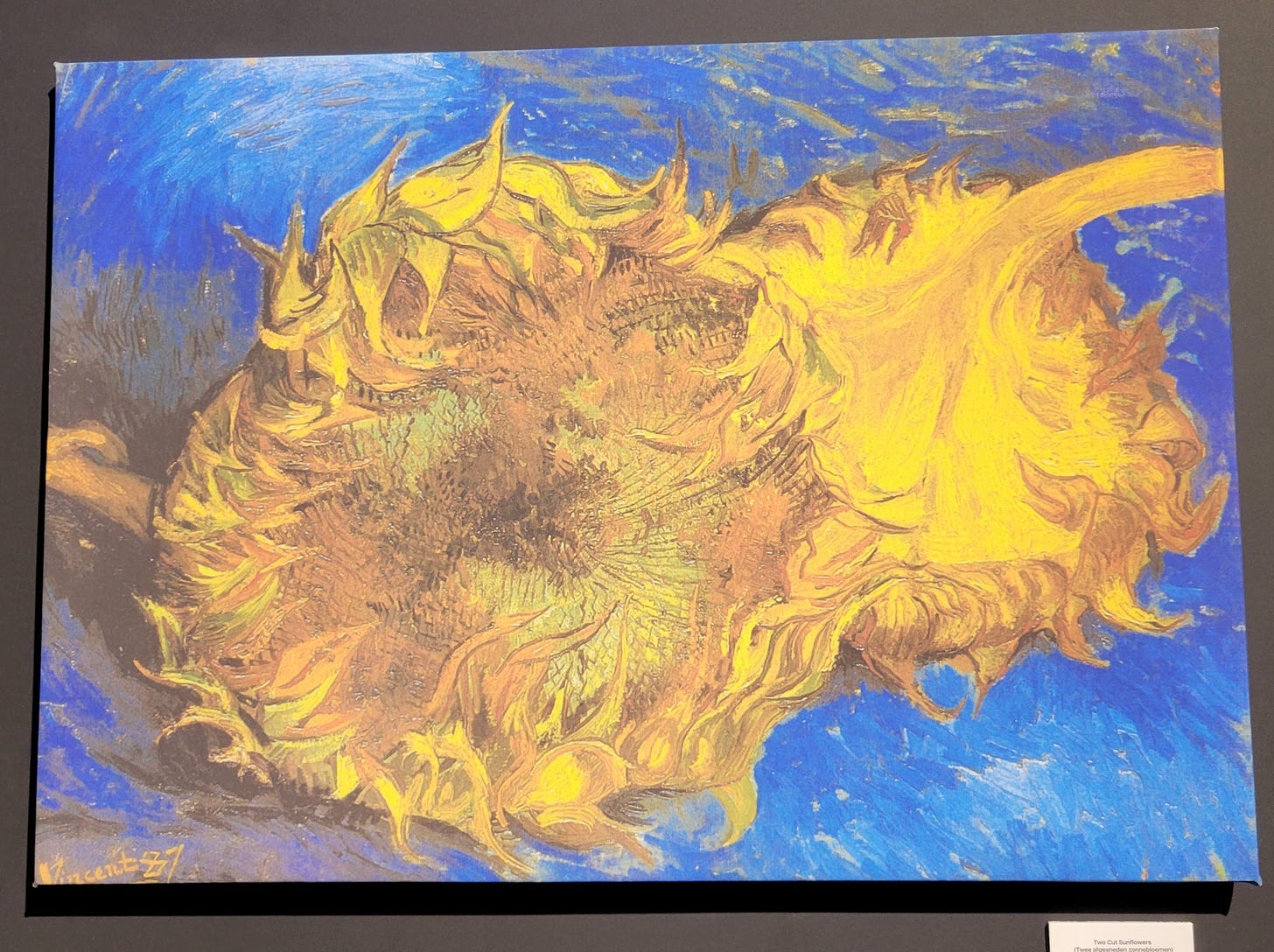It was as if an invisible thread from the vibrant yellows and iridescent blues reeled me in.
Van Gogh has been tugging at my heart ever since I walked past the Irises in the Garden in the Impressionist gallery at the Met (Metropolitan Museum of Art, New York). Here, before me, was one of a series that he painted in 1887 of sunflowers in their various stages - from the promise of the buds to the withered, dried and desiccated petals as it went to seed. It was evocative. It was bold. It was detailed. It was imaginative.
Finding your signature style
Sunflowers became intrinsically linked with Van Gogh. A signature of sorts, along with his unique style of brushstroke. He was surrounded by fields of them in Arles and originally intended for these paintings to brighten his guest room for Gaughin.
He also benefitted from advances in technology - in the manufacturing of paint pigments. He was one of the first painters in his era to embrace the vibrant yellow colour so characteristic of his work. Serendipity?
"These series of paintings were made possible by the innovations in manufactured pigments in the 19th Century. Without the vibrancy of the new colors, such as chrome yellow, Van Gogh may never have achieved the intensity of Sunflowers."
Different angles, different light
I thoroughly enjoyed my few hours immersed in Van Gogh while in London. The VR excursion through Arles was great and the ability to see the inspirations make their way onto canvas was brilliant. I listened to the wonderful soundtrack that accompanied the unfolding Starry Night, Almond Blossoms, and Irises as I kicked back in the 360 room.
But what I found most compelling — what I walked away with — was his ability to stick with a particular subject.
Van Gogh obsessively refined his art by tackling the same subjects, re-envisioning them again and again. Sunflowers, irises, roses - nature’s beauty particularly inspired him.
He used sunflowers as his subject eleven times. His catalog has over twenty paintings of flowers in a vase - peonies, irises, roses, lilac, and yes, sunflowers.
Van Gogh did it. Can I?
Van Gogh continually evaluated the same subject over and over again, studying it from different perspectives, angles, lighting and understanding the passage of time. It kinda gives me permission to do the same.
Welcome to edition 50 of the newsletter. And no apologies for studying my favourite topics from a range of angles, sharing what I learn as I dig deeper.
Persistence and exploration maybe particularly valuable 21st-century skills. But the masters have been practicing them for quite a while.
If you would like to join our tribe of Tilters …






Poet Glynn Maxwell said that in poetry ‘there is no such thing as repetition’ and when I first read that it was like an ‘aha’ moment.
I’ve found that it can be usefully extrapolated to many different aspects of life. You’ve shown it to us here with your reflections on Van Gogh’s sunflowers. Exactly this Karena!
I was thinking about this and how I can do a better job of "compiling" related writing themes into clearer buckets, since I often revisit the same topics in my head. Thank you for sharing the Van Gogh story!